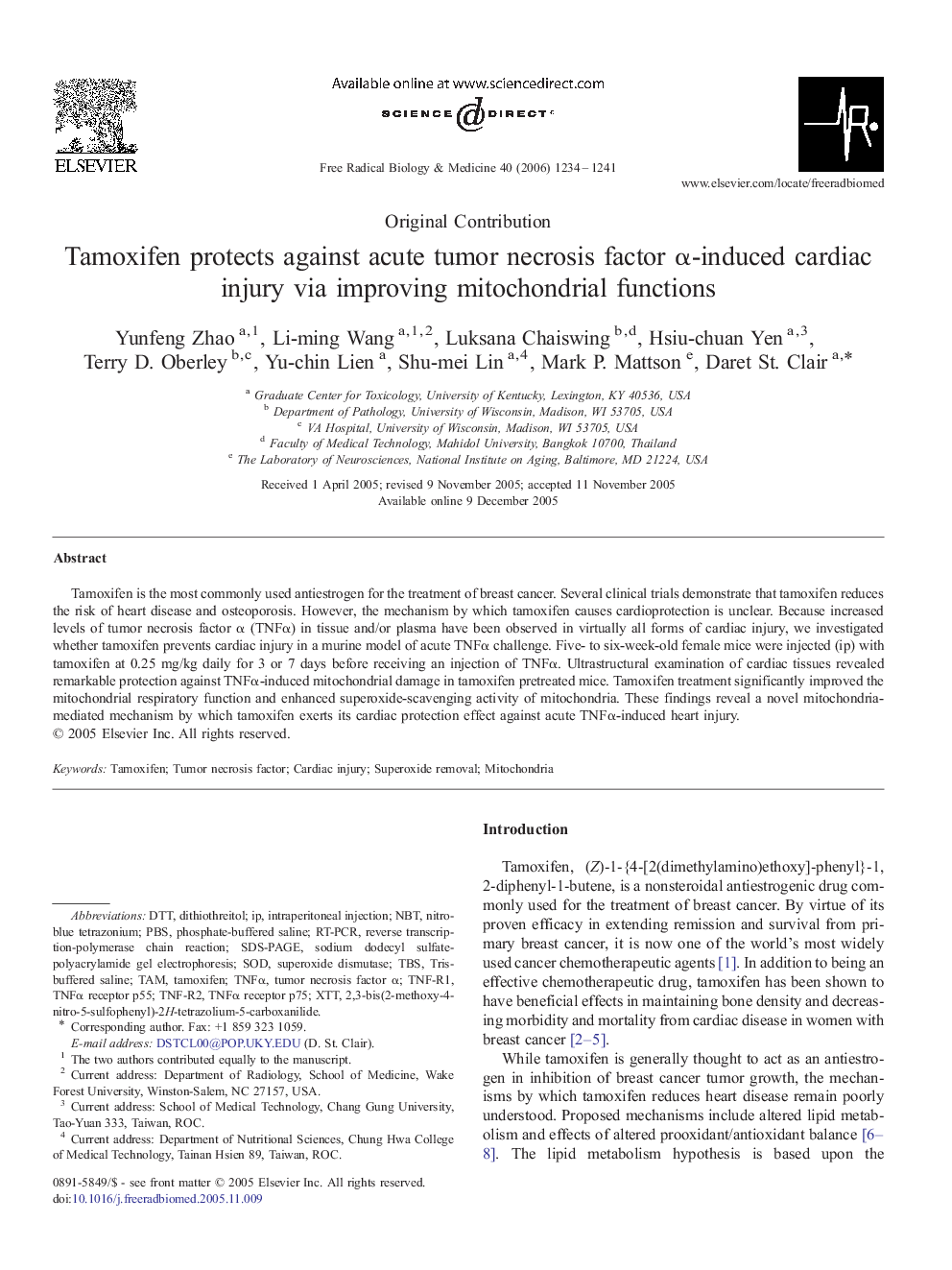| Article ID | Journal | Published Year | Pages | File Type |
|---|---|---|---|---|
| 1911973 | Free Radical Biology and Medicine | 2006 | 8 Pages |
Abstract
Tamoxifen is the most commonly used antiestrogen for the treatment of breast cancer. Several clinical trials demonstrate that tamoxifen reduces the risk of heart disease and osteoporosis. However, the mechanism by which tamoxifen causes cardioprotection is unclear. Because increased levels of tumor necrosis factor α (TNFα) in tissue and/or plasma have been observed in virtually all forms of cardiac injury, we investigated whether tamoxifen prevents cardiac injury in a murine model of acute TNFα challenge. Five- to six-week-old female mice were injected (ip) with tamoxifen at 0.25 mg/kg daily for 3 or 7 days before receiving an injection of TNFα. Ultrastructural examination of cardiac tissues revealed remarkable protection against TNFα-induced mitochondrial damage in tamoxifen pretreated mice. Tamoxifen treatment significantly improved the mitochondrial respiratory function and enhanced superoxide-scavenging activity of mitochondria. These findings reveal a novel mitochondria-mediated mechanism by which tamoxifen exerts its cardiac protection effect against acute TNFα-induced heart injury.
Keywords
RT-PCRTNF-R2TNF-R1XTTNBTPBSTBSDTTTNFαCardiac injurysodium dodecyl sulfate-polyacrylamide gel electrophoresisSDS-PAGETAMtamoxifenTris-buffered salineintraperitoneal injectiontumor necrosis factor αdithiothreitolSODSuperoxide dismutasetumor necrosis factorPhosphate-buffered salineMitochondriareverse transcription-polymerase chain reaction
Related Topics
Life Sciences
Biochemistry, Genetics and Molecular Biology
Ageing
Authors
Yunfeng Zhao, Li-ming Wang, Luksana Chaiswing, Hsiu-chuan Yen, Terry D. Oberley, Yu-chin Lien, Shu-mei Lin, Mark P. Mattson, Daret St. Clair,
